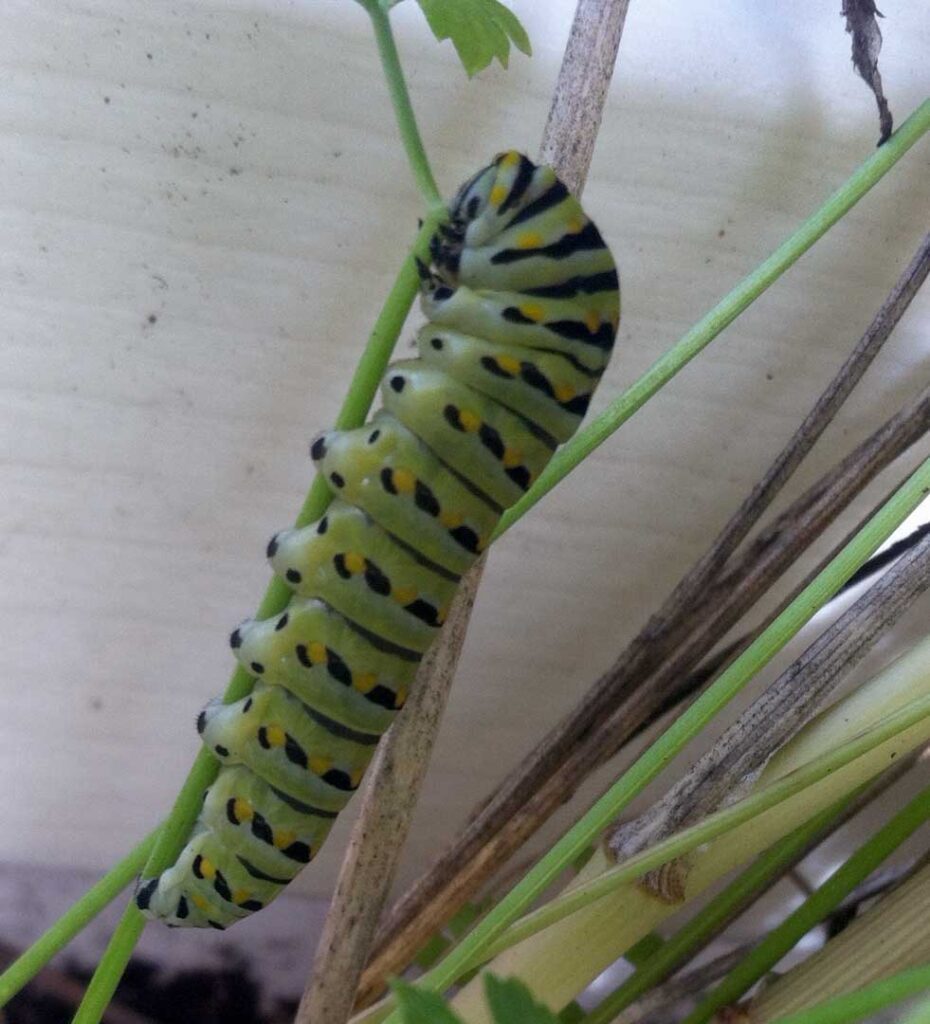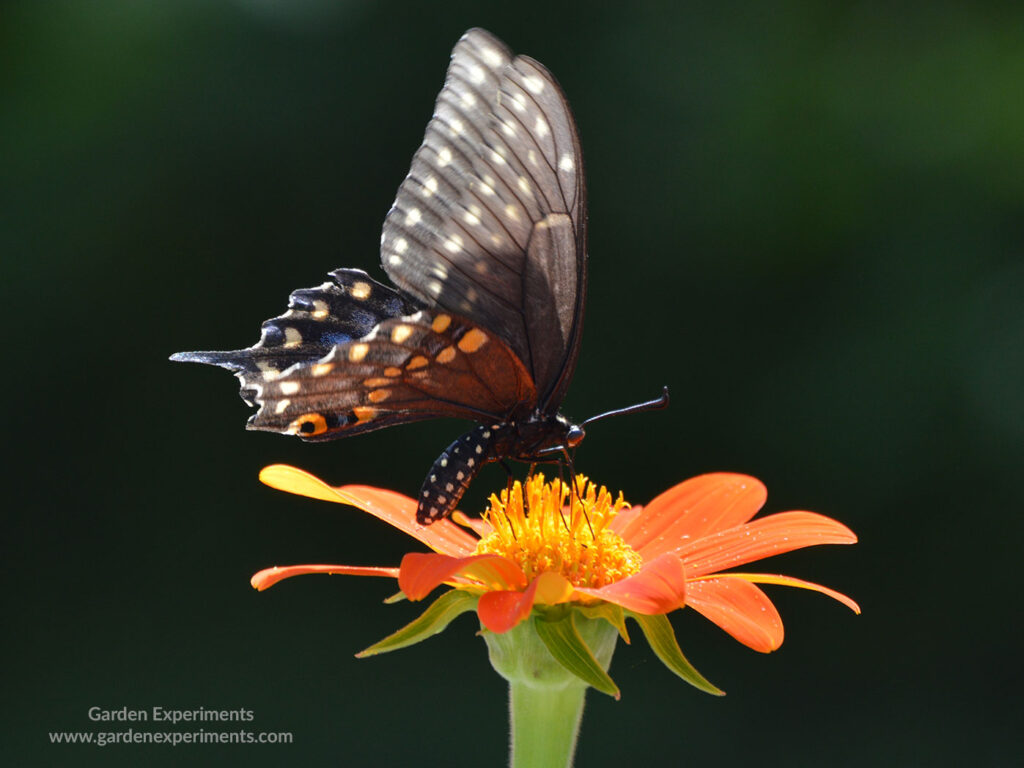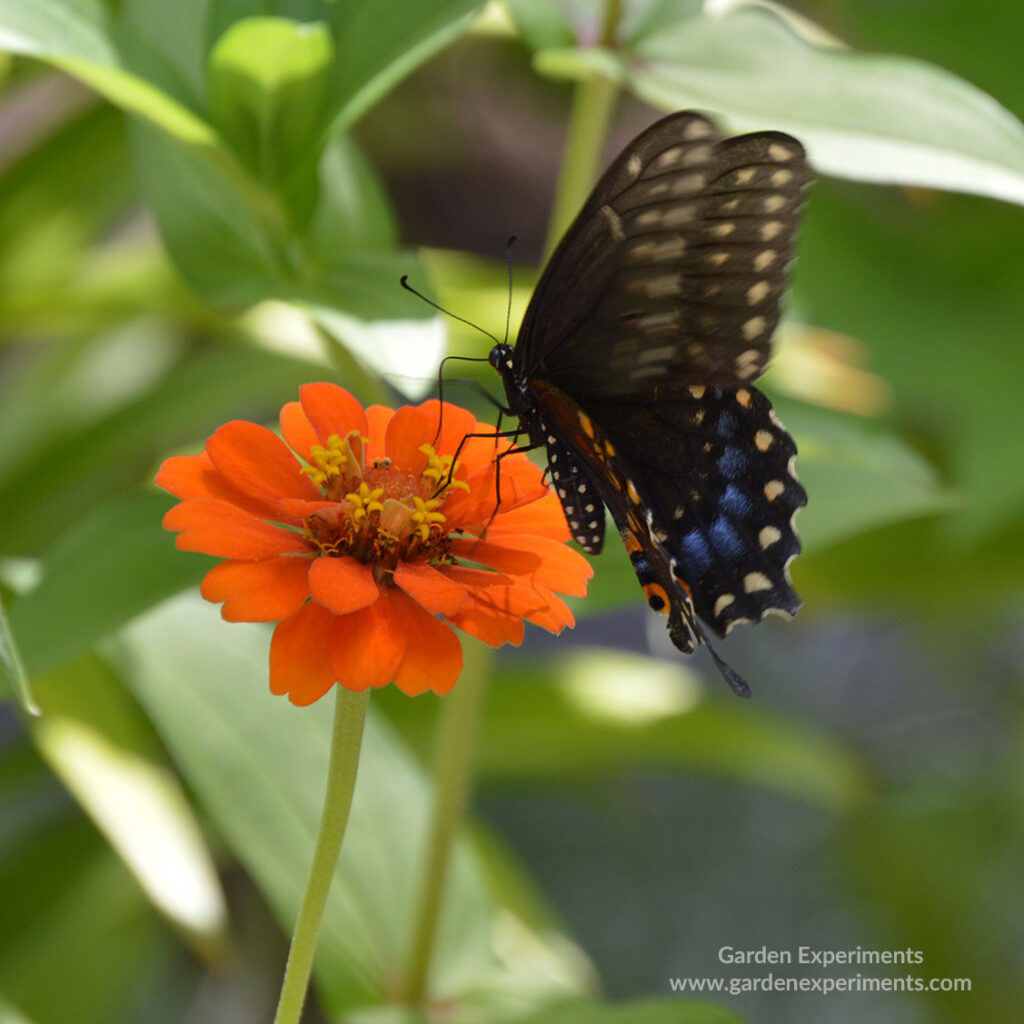One of the greatest joys I get out of my garden is watching the insects and wildlife that is attracted to the flowers and plants. I know that some of my plants will be consumed by these critters, but I’m willing to share.
This week, I stumbled across this little black swallowtail caterpillar (Papilio polyxenes) munching in my carrot patch. These little guys have such a bright green color and the yellow and black spots on them seem to hint at their future butterfly wings.
Black Swallowtail Butterfly Host Plants
Black swallowtail caterpillars feed on many of the plants in the Apiaceae family of plants, which includes parsley, carrots, celery, etc.
The list of host plants for black swallowtail butterflies includes:
- Queen Anne’s Lace (Daucus carota)
- Carrots (Daucus carota)
- Parsley (Petroselinum crispum)
- Fennel (Foeniculum vulgare)
- Celery (Apium graveolens)
- Dill (Anethum graveolens)
- Caraway (Carum carvi)
- Herbwilliam or Mock Bishop’s Weed (Ptilimnium capillaceum)
- Spotted Hemlock (Cicuta maculata)
- Water Cowbane (Oxypolis filiformis)
- Wild Parsnip (Pastinaca sativa)
How to Create a Butterfly Garden
Adult butterflies feed on nectar from many flowers. In my garden, they particularly seem to like zinnias and Mexican sunflower. They are two of my favorite flowers for butterfly gardens. If you want to attract Black swallowtail butterflies to your garden, be sure to include nectar-producing plants like sages (salvias), verbena, lantana, zinnias, and more.
For a list of flowering plants for butterfly gardens, read my article – 30 Plants to Feed & Host Butterflies In Your Garden.
I’ve included photos of the flowers to help you with identification when you are picking the plants for your garden. I recommend including some native plants as they are hardy and easier to grow, but there’s nothing wrong with having a bunch of non-natives for adult swallowtails.



